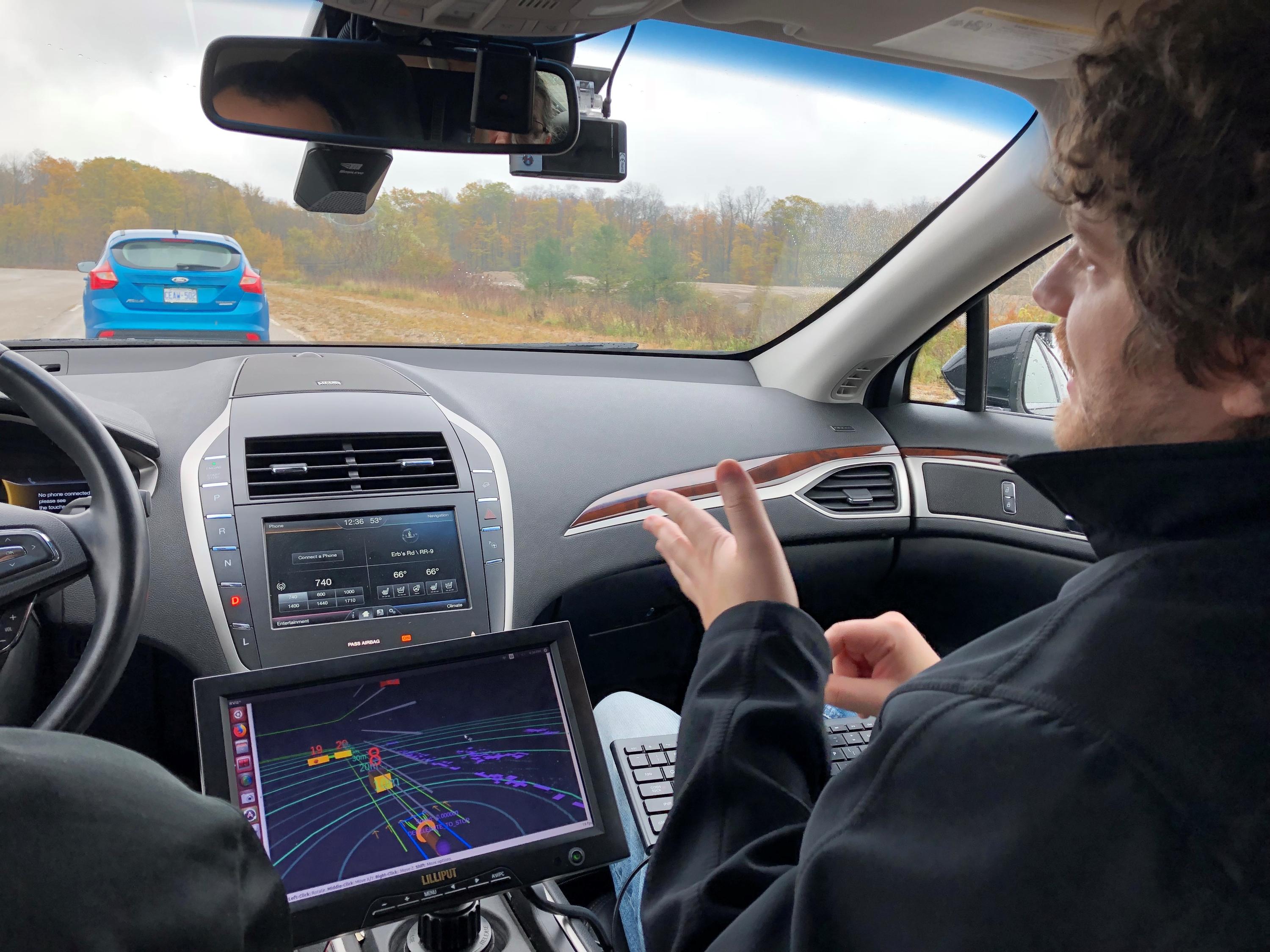More than 100 people got a feel for the future when University of Waterloo researchers offered rides today to demonstrate their progress on development of a self-driving car.
Autonomoose, the modified Lincoln MKZ hybrid sedan at the heart of the project, completed several complex manoeuvres on its own as it took guests from the media, the University and industry partners around a test track in Waterloo.

Autonomoose takes guests for a ride during a full day of demonstrations to show off progress on the ambitious project.
Included were identifying and avoiding hay bales set up as an obstacle, stopping for a parked car in its lane and negotiating a left turn at an intersection after yielding to an oncoming vehicle.
“It’s a robot that’s doing its own thing,” said guest Chris Eliasmith, a Waterloo professor known for his groundbreaking research on simulated brains. “The fact they have integrated all of these different parts is pretty impressive.”
The demonstration day came after two years of painstaking work by more than 60 professors, engineers, researchers and graduate students since they won approval from the Ontario government to do on-road testing in an autonomous vehicle pilot program.
A major milestone was reached in August when the car - which is equipped with multiple cameras, LiDAR and radar scanners, and other sensory devices that gather data for processing by sophisticated on-board computer software – logged its 100th kilometre on public roads in self-driving mode.
“It’s such a complex system,” said Krzysztof Czarnecki, an electrical and computer engineering professor who co-leads the project. “Getting to the point where you can actually go safely on the road is really a Herculean task.”

Michael Smart, software lead for the project, explains what is happening as Autonomoose stops for a vehicle in its lane.
The test drives proved so popular that Autonomoose, which had a driver ready to take over the wheel at all times, was called on to do back-to-back-to-back circuits every 10 minutes for several hours.
Carlos Moreno, an engineering research associate, jumped at the chance to take a spin after doing related work with the Real-Time Embedded Software Group at Waterloo.
“It’s a pretty exciting opportunity to see the results of this fantastic research,” he said. “I think it’s the future.”
Researchers behind the most advanced university-based program of its kind in Canada were thrilled to be able to confidently give rides as work towards a fully autonomous vehicle continues.
But they acknowledged one of the lessons they’ve learned to date is just how challenging it will be to completely replace human drivers.
Building 'something that doesn't exist yet'
“I knew it was a long list of things we’d have to do,” said Steven Waslander, an adjunct Waterloo Engineering professor who is the other project co-lead. “I didn’t realize how big every single one of them would be, but that is part of the fun. We are trying to build something that doesn’t exist yet.”
Two years from now, Czarnecki hopes to have a system that is safe and reliable enough to drive in high-pedestrian areas such as the ring road on campus.
Waslander predicts fleets of self-driving taxis will be common in geographically limited areas in five to 10 years, but ordinary consumers anxious to get their hands on fully autonomous vehicles shouldn’t be holding their breath.
“To
buy
your
own
self-driving
car
that
you
can
sleep
in
is
a
long
way
off,”
Waslander
said,
“because
it
has
to
be
able
to
handle
every
single
eventuality.”